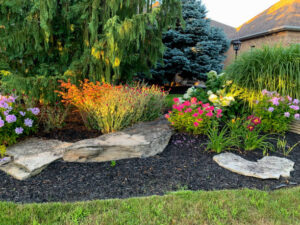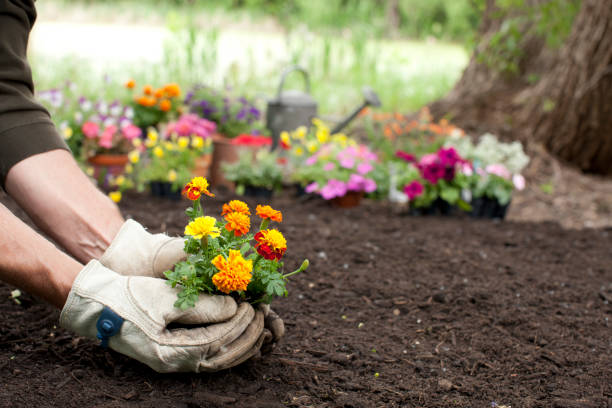Grow Your Own Gourmet: The Joys of Culinary Gardening
As someone who loves spending time in the kitchen, there’s nothing quite like the feeling of plucking fresh herbs and veggies straight from your own garden. The flavour is just unbeatable! That’s why culinary gardening has become such a passion of mine – it allows me to reconnect with nature while also stocking my pantry with the tastiest homegrown ingredients.
If you’re new to the world of culinary gardening, the prospect of starting your own edible oasis might seem a bit daunting. But trust me, it’s easier than you think! With a little know-how and the right plan, you can transform even the smallest of spaces into a thriving kitchen garden.
In this guide, I’ll walk you through everything you need to know to get your culinary garden up and growing. From choosing the perfect plants to harvesting and preserving your bounty, you’ll be whipping up gourmet meals with your homegrown goodies in no time.
Planning Your Edible Oasis

Culinary Gardening
The first step in any successful culinary garden is planning out your space. Start by evaluating the conditions you’re working with – how much sun does the area get? What’s the soil like? These factors will help you determine which plants will thrive.
Once you’ve assessed the site, it’s time to start picking your plants. Of course, classic culinary herbs like basil, rosemary, and thyme are always a safe bet. But don’t be afraid to get a bit more adventurous! Edible flowers, specialty greens, and even compact vegetable varieties can all find a home in the culinary garden.
When it comes to layout, think about functionality as well as aesthetics. Group your plants by their needs, creating little “herb hills” or “salsa patches” for easy harvesting. And don’t be afraid to tuck edibles into your existing flower beds or borders – they can add lovely pops of colour and texture.
Mastering the Art of Herb Growing

Mastering the Art of Herb Growing
Herbs are the backbone of any culinary garden, so it’s important to get them right. The good news is that many common cooking herbs are pretty easy to grow, even for beginners.
When planting, pay close attention to the sunlight and soil requirements for each variety. Some, like rosemary and lavender, thrive in hot, dry conditions, while others, like parsley and chives, prefer a bit more moisture. Grouping plants with similar needs will help ensure they all stay happy and healthy.
Proper harvesting is key too. With most herbs, you’ll want to snip the leaves or stems regularly to encourage new growth. And be sure to time your harvests – many herbs are best picked just before flowering for maximum flavour.
Of course, once you’ve got your fresh herbs, you’ll want to preserve them to enjoy all year round. Drying, freezing, and making herb-infused oils or vinegars are all great options. Just be sure to research the best methods for each herb to retain those vibrant flavours.
Incorporating Edible Vegetables and Flowers
Herbs are just the beginning when it comes to culinary gardening. Vegetables, fruits, and even edible flowers can all find a home in your gourmet garden.
When choosing your veggies, look for compact, bush-type varieties that are well-suited to container or small-space growing. Cherry tomatoes, mini peppers, and dwarf beans are all excellent options. And don’t forget about greens like lettuce, kale, and Swiss chard – they add wonderful texture and nutrition to any dish.
Edible flowers are another fun way to get creative in the culinary garden. Nasturtiums, marigolds, and violas all have a delightful peppery or floral flavour that can really elevate a salad or cocktail. Just be sure to only consume flowers that are specifically marked as edible.
When it comes to planting, try to group your veggies and flowers together in a way that’s both functional and visually appealing. Trailing vines can spill over the edges of raised beds, while compact bushes can nestle between taller herbs.
Preserving Your Culinary Harvest
One of the best parts about having a culinary garden is being able to enjoy your homegrown goodies all year round. But with so much fresh produce on hand, it’s important to have a plan for preserving your bounty.
Drying is a great option for herbs, as it allows you to store them for months without losing their potent flavours. You can also make flavourful herb oils and vinegars to drizzle over salads or use in marinades.
For vegetables and fruits, freezing is often the easiest preservation method. Blanch your produce before freezing to lock in freshness and nutrients. And don’t forget about canning – it’s a brilliant way to turn your tomatoes, peppers, and other veggies into delicious sauces, salsas, and pickles.
Of course, you don’t have to preserve everything. Sometimes the best way to enjoy your culinary garden is simply to pluck and eat! Fresh herbs, edible flowers, and cherry tomatoes make wonderful additions to salads, pastas, and even cocktails.
Troubleshooting Tips for Culinary Gardening Success
Like any type of gardening, there can be a bit of a learning curve when it comes to growing your own edible oasis. But don’t worry – with a little troubleshooting, you’ll be well on your way to culinary gardening mastery.
One of the most common issues is pest infestations. Aphids, slugs, and other critters can quickly munch their way through your precious herbs and veggies. The key is to stay vigilant and employ organic pest control methods like companion planting, hand-picking pests, and using natural repellents.
Bolting, or the premature flowering of plants, can also be a frustrating problem, especially with herbs like basil and cilantro. To prevent this, make sure you’re providing the right growing conditions and harvesting regularly.
And of course, don’t forget about watering! Culinary plants, especially those in containers, can be thirsty. Stick to a consistent watering schedule and mulch around the base of plants to help retain moisture.
With a little patience and a willingness to experiment, you’ll be well on your way to culinary gardening success. Before you know it, you’ll be whipping up gourmet meals straight from your own backyard oasis.
So what are you waiting for? It’s time to get your hands dirty and start growing your own delicious ingredients! Your taste buds (and your wallet) will thank you.
Frequently Asked Questions About Culinary Gardening
What are the best herbs to grow for cooking?
Some of the most popular and versatile culinary herbs include basil, rosemary, thyme, oregano, parsley, cilantro, and mint. These herbs are relatively easy to grow and add amazing flavor to all kinds of dishes.
The amount of sunlight required can vary quite a bit depending on the specific plant. Most herbs and vegetables need at least 6 hours of direct sunlight per day, with some like tomatoes, peppers, and basil preferring even more. Be sure to research the individual light requirements for the plants in your culinary garden.
Absolutely! Container gardening is a great option, especially for small spaces. Look for compact, bush-type vegetable varieties and herbs that thrive in pots. Just be sure to choose containers with good drainage and use a nutrient-rich potting mix.
The optimal planting time depends on your climate, but generally spring is the best season to get your culinary garden started. This gives plants enough time to establish themselves before the heat of summer. In mild climates, you may even be able to grow year-round.
There are several great ways to preserve your homegrown herbs, vegetables, and fruits. Drying, freezing, canning, and making infused oils or vinegars are all excellent options. Proper preservation techniques will help you enjoy your culinary garden bounty all year round.
Some common culinary garden pests include aphids, slugs, and caterpillars. Diseases like powdery mildew and fungal blights can also be an issue. Practicing good garden hygiene, using organic pest control methods, and planting disease-resistant varieties can help prevent and manage these problems.
Fertilizing is generally recommended to keep your culinary plants healthy and productive. Look for organic, slow-release fertilizers that are formulated for vegetables and herbs. Compost and aged manure can also provide valuable nutrients to the soil.Have another question about starting or maintaining your culinary garden? Feel free to reach out – I’m always happy to help fellow food-growing enthusiasts!



Pingback: Growing Herbs for Cooking: Unlock Gourmet Flavors at Home: A Step-by-Step Guide - fun4shar.fun
Pingback: Growing Your Own Herbs 101: Everything You Need to Know for a Bountiful Home Herb Harvest - fun4shar.fun